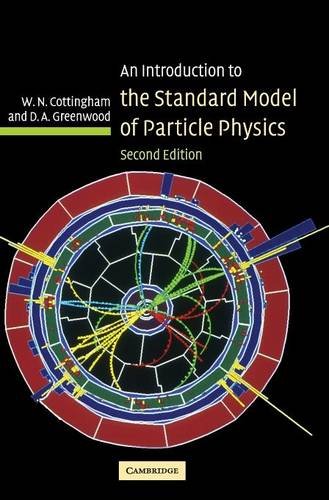An Introduction to the Standard Model of Particle Physics book download
Par hinkle vickey le lundi, mai 30 2016, 07:22 - Lien permanent
An Introduction to the Standard Model of Particle Physics by D. A. Greenwood, W. N. Cottingham


An Introduction to the Standard Model of Particle Physics D. A. Greenwood, W. N. Cottingham ebook
Page: 294
ISBN: 0521852498, 9780521852494
Format: pdf
Publisher: Cambridge University Press
Are its properties as expected for the long-sought Higgs boson, the final missing ingredient in the Standard Model of particle physics? Cambridge: Cambridge University Press. The first few chapters give an introduction to higher dimensions, looking at what they mean and how all but three of the dimensions of space might be curled up so as to be undetectable. The standard model of particle physics is a model (in particle physics): a quantum field theory that describes the fundamental particles currently experimentally known, containing. Since this is one of the most important discoveries . Introduction to Elementary Particles. 1.1 INTRODUCTION Modern particle physics research is based on subatomic particles, including atomic constituents such as electrons, protons, and However, as physicists' knowledge has improved which particles are regarded as fundamental has changed with time. All the current theories, as Quantum Field Theory, Nuclear Physics, Particle Physics, Standard Model, etc., all they keep the fundamental principles of Quantum Mechanics. Or is it something more exotic? Matter: electrons, neutrinos, quarks and other fermions,. Modern theory called the standard model, attempts to explain the theory concerning the electromagnetic, weak, and strong nuclear interactions, which mediate the dynamics of the known subatomic particles. She then moves on to the standard model, which unifies the electromagnetic, weak and strong forces, explaining how particle physics can be explained in terms of quarks and leptons interacting via forces mediated by photons, gauge bosons and gluons. �The current theoretical framework that describes elementary particles and their forces, known as the Standard Model, is based on experiments that started in 1897 with the discovery of the electron. On the 4th of July, CERN announced the discovery of a new particle that can be interpreted as the Higgs boson with both the ATLAS and CMS experiments. An Introduction to the Standard Model of Particle Physics, 2nd edition. 2008, Nambu receives half of the Nobel Prize for introducing the concept of spontaneous symmetry breaking into particle physics, which led, for example, to the explanation of why some particles have mass and others have not (Higgs mechanism).
Introduction to Stateflow with Applications epub
Think: A Compelling Introduction to Philosophy download
Business Vocabulary in Practice (Collins Cobuild) - 1st edition pdf